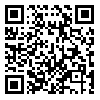Volume 13, Issue 2 (5-2013)
Modares Mechanical Engineering 2013, 13(2): 79-92 |
Back to browse issues page
Download citation:
BibTeX | RIS | EndNote | Medlars | ProCite | Reference Manager | RefWorks
Send citation to:



BibTeX | RIS | EndNote | Medlars | ProCite | Reference Manager | RefWorks
Send citation to:
Improving the accuracy of laser scanning using dithering technique and simultaneous laser and camera calibration. Modares Mechanical Engineering 2013; 13 (2) :79-92
URL: http://mme.modares.ac.ir/article-15-730-en.html
URL: http://mme.modares.ac.ir/article-15-730-en.html
Abstract: (7294 Views)
Ttriangulation technique is one of the most commonly techniques used in three dimensional measurements. The depth reconstruction accuracy is a direct impact of the quantization process, and so it is related to the pixel size of the sensor. By decreasing the pixel size, the accuracy can be improved however it will affect the quality of the image as it reduces the SNR. Dithering technique may be used to reduce the errors during quantization. The current study introduces a novel technique in which a relative fine movement between object and sensor is generated during picture capture. The calibration of laser and camera is another important factor affecting the accuracy of the scanner. In this study, the laser is calibrated in high precision with the camera simultaneously without any extra mechanical device. The paper firstly describes the theory of the noise introduction technique followed by modeling and simulation of the process. The results obtained from simulation show great improvement in measurement accuracy. To evaluate the result in a real world, a control rig was designed and built following which experiment were performed. The results showed considerable improvement in measurement accuracy. The result of both simulation and experiments are reported.
Received: 2012/06/7 | Accepted: 2012/10/24 | Published: 2013/02/18
| Rights and permissions | |
 |
This work is licensed under a Creative Commons Attribution-NonCommercial 4.0 International License. |






